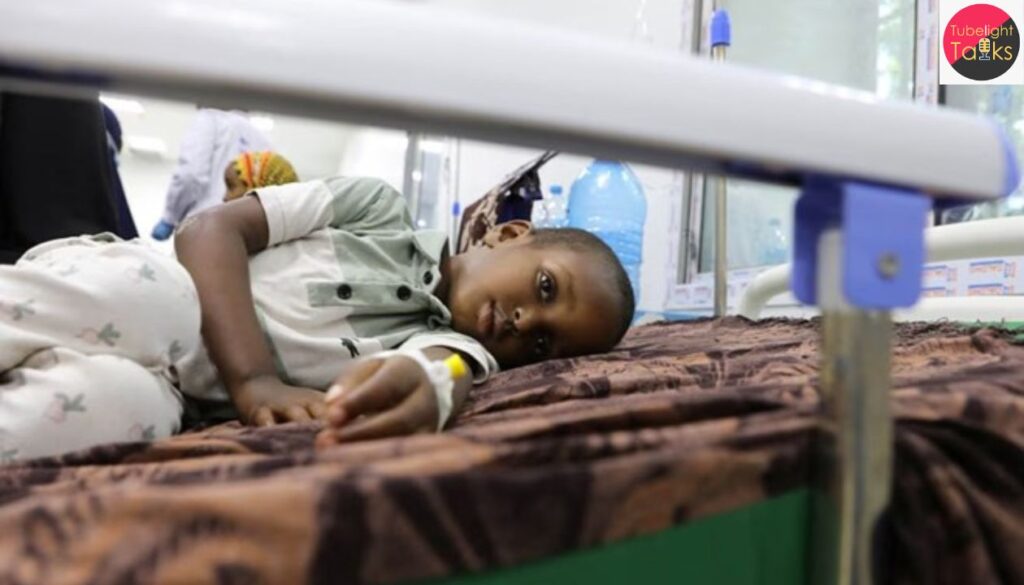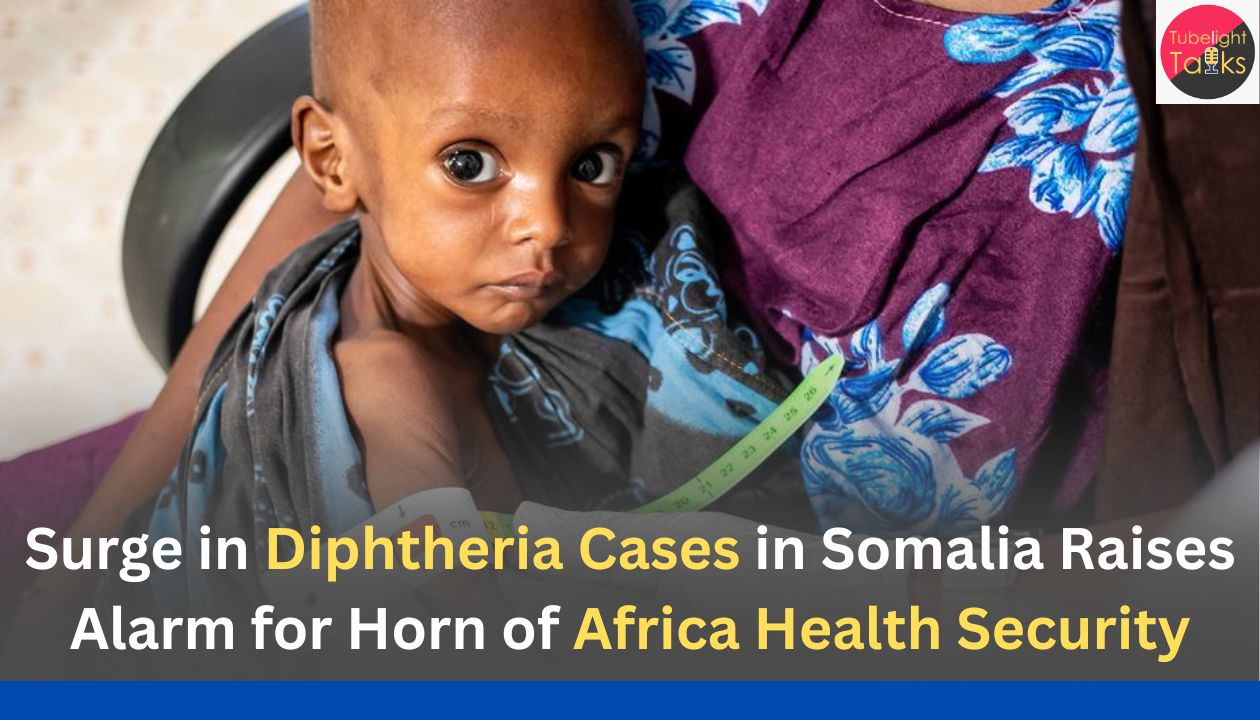Diphtheria Cases: Somalia is currently facing a sharp rise in diphtheria infections, with more than 1,600 cases and 87 deaths recorded in 2025 — nearly double the figures for the entirety of 2024. The outbreak is being driven by a combination of vaccine shortages, closures of vaccination outreach units and steep cuts in international humanitarian aid, particularly from the United States.
The health ministry of Somalia has acknowledged the gravity of the situation and announced plans for a nationwide vaccination drive, though no specific rollout schedule has been provided.
The Outbreak and Its Scope
Magnitude of the Surge
According to the director of Somalia’s National Institute of Health, Hussein Abdukar Muhidin, the country registered over 1,600 diphtheria cases and 87 fatalities by mid‑2025 — compared with 838 cases and 56 deaths in all of 2024.
Diphtheria is a bacterial disease that causes severe throat swelling, breathing difficulties and fever, and is entirely preventable via vaccination.
Vulnerable Populations & Displacement
Many of the affected children are from internally displaced populations or from rural/remote areas where mobile immunisation services have been disrupted. For example, in central Somalia’s Ceeldheere, a family of children who escaped conflict had none vaccinated; the 8‑year‑old son died from diphtheria, while younger siblings were hospitalised.
Geographic Patterns
The outbreak clusters are strongest in regions like Puntland, Mudug, Nugal and Bari, though cases have also been documented in the capital Mogadishu and surrounding districts.
Underlying Drivers & Systemic Failures
Vaccine Shortage & Delivery Disruptions
Somalia’s health ministry says procuring adequate diphtheria vaccines has been challenged by global shortages and logistical bottlenecks. At the same time, prior funding cuts meant mobile clinics and outreach vaccination teams had ceased operations in some areas, leaving children unprotected.

Aid Cuts and Reliance on Donors
Somalia’s public‑health system is highly reliant on donor funding. U.S. aid to Somalia declined from around US $765 million to roughly US $149 million in the most recent fiscal year, leading to closure of hundreds of health centres. Other donors, including the UK, France and Germany, have also reduced commitments, compounding strain on immunisation programmes.
National Health Budget and Governance Gaps
In 2024, Somalia allocated just 4.8% of its national budget to health, down from 8.5% in 2023. Experts comment that weak governance, conflict, displacement and logistics all combine to make vaccine‑campaign roll‑out extremely challenging.
Conflict, Mobility and Public‑Health Access
Continued conflict and displacement, especially in central and southern Somalia, disrupt vaccination campaigns, reduce access and increase vulnerability of communities which are mobile or informal.
Broader Disease‑Control Implications
Relief agencies warn that the surge in diphtheria is linked with increases in other vaccine‑preventable diseases such as measles, whooping cough and cholera — in part because of the same weakening of routine immunisation infrastructure.
Response Efforts & Challenges Ahead
Announced Vaccination Campaign
Somalia’s Health Ministry has announced a plan for a catch‑up vaccination campaign targeting vulnerable children, mobile outreach and remote districts. However, no timeline or funding commitment has been publicly detailed.
Immediate Humanitarian Measures
International NGOs and relief organisations are mobilising emergency vaccination supplies, treatment centres and disease‑surveillance support in hotspots. Yet, resource‑shortages and logistic hurdles remain acute.
Also Read: World Health Summit 2025: Global Health Challenges & Innovations
Need for Strengthening Health Systems
Beyond the immediate outbreak, experts emphasise the need to rebuild routine immunisation systems, restore mobile outreach units, strengthen cold‑chain logistics and improve governance and financing of the health sector.
Cross‑Border and Regional Implications
Given Somalia’s ties with neighbouring countries and migration flows, the outbreak poses a risk of cross‑border spread of diphtheria and other diseases. It also underscores regional vulnerability in the Horn of Africa to vaccine‑preventable disease resurgence.
Implications for Global Health Security
Vaccine Equity and Global Supply Chains
The Somalia outbreak highlights how global vaccine shortages and supply‑chain disruptions can manifest in life‑threatening outbreaks in fragile settings.
Donor Dependency and Sustainable Financing
The heavy reliance on external funding makes health systems fragile; when donor flows shrink, immunisation and preventive care suffer the most.
Risk of Re‑Emerging Diseases
Diphtheria, once well‑controlled in many parts of the world, is resurging, which signals broader risk that other vaccine‑preventable diseases may rebound unless routine systems are secured.
Regional Instability and Health Vulnerability
In regions affected by conflict, displacement and weak governance, such outbreaks are likely to become more frequent — thus linking health‑security with peace, stability and governance agendas.
Protection, Responsibility and Care
In line with the teachings of Sant Rampal Ji Maharaj and the essence of satgyan (true knowledge), this health crisis invites a reflection: protecting life and serving humanity is not only a matter of medicine or funding, but of moral responsibility, compassion and solidarity. When children are unvaccinated, clinics are closed and lifesaving care recedes, the test is not only of public‑health systems, but of our collective duty to uplift the vulnerable. True progress is achieved when we ensure that medicine, services and protection reach everyone — especially the last child, in the remotest community.
What to Watch in the Coming Months
Implementation of the Vaccination Drive
Key will be tracking when the vaccination campaign begins, how many children are covered, and whether mobile immunisation units resume full functionality.
Funding and Donor Commitments
Will international donors respond to funding shortfalls? Will Somalia’s government increase domestic health financing?
Disease Monitoring and Case‑Trends
Watch for trends in diphtheria incidence, mortality, and whether the surge triggers broader outbreaks of other vaccine‑preventable diseases.
System‑Level Reform and Long‑Term Resilience
Monitoring whether Somalia transitions from crisis‑mode to rebuilding resilient immunisation systems, cold‑chains, community outreach and public‑health infrastructure.
FAQs: Diphtheria Outbreak in Somalia
Q1. How many diphtheria cases have been reported so far in Somalia?
More than 1,600 cases and 87 deaths were reported in 2025.
Q2. What are the main drivers of the surge?
Drivers include vaccine shortages, closure of mobile outreach clinics following aid cuts, conflict and displaced populations.
Q3. Why has vaccine access been restricted?
Global diphtheria vaccine supply constraints combined with major reductions in donor funding (especially U.S. aid) hindered procurement and distribution.
Q4. Which children/societies are most at risk?
Children in remote, conflict‑affected, displaced or underserved communities with low immunisation coverage are most vulnerable.
Q5. What can prevent this from recurring?
Strengthening routine immunisation, rebuilding mobile clinic networks, securing sustainable funding, improving governance and ensuring supply‑chain resilience are critical.










